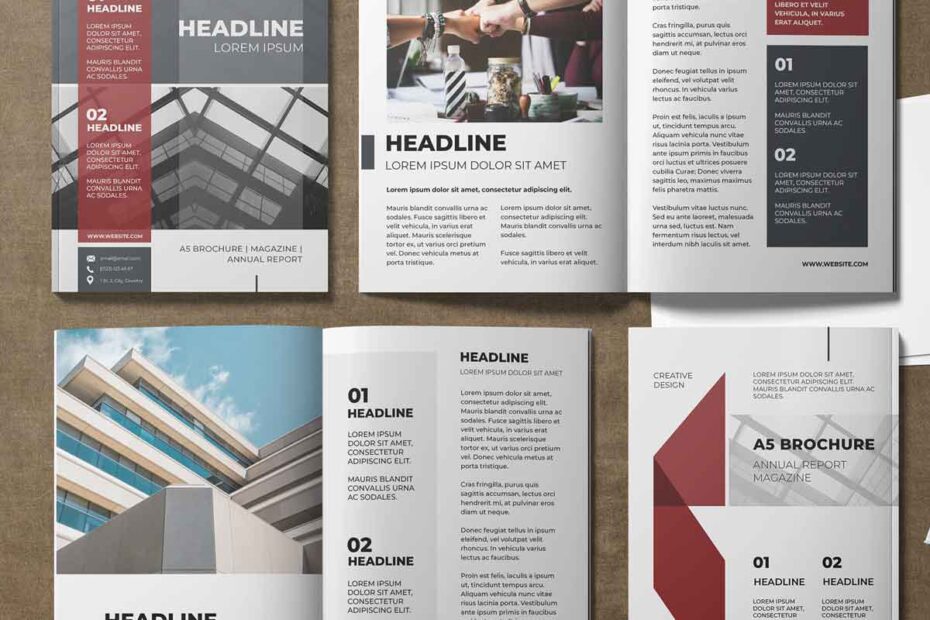Composition in graphic design is the way visual elements are organized and arranged in a design piece or project.
The main objective of a good layout is to present information clearly and attractively, and to guide the viewer through the design effectively. A well-executed composition enhances the communication of the message and makes the design more attractive and professional.
Basic Principles of Composition
The basic principles of composition in graphic design include:
- Hierarchy: establishes a visual importance of elements, so that the most important thing attracts attention first. Hierarchy can be established through size, color, contrast, among others.
- Balance: It is the visual balance of the elements. It can be symmetrical (where each side of the design has a similar visual weight) or asymmetrical (where it is balanced by arranging elements of different sizes and visual weights).
- Contrast: It is the difference between elements to make them stand out. Contrast can be achieved with colors, sizes, shapes, and more.
- Alignment: Helps create a clean and orderly design by aligning elements in relation to each other, which provides coherence and cohesion.
- Repetition: Using design elements consistently. Helps strengthen visual identity and establish patterns.
- Proximity: Related elements should be close together, which helps organize information and guide the viewer.
- Space: Refers to white space or negative space in a design. It is essential to keep a design from feeling cluttered and to highlight certain elements.
- Flow and direction: Guides the viewer’s eye through the design so that all information is absorbed in an orderly fashion.
- Focus: Directs the viewer’s attention to where the designer wants them to look first.
- Scale: Use of different sizes to enhance comprehension and create variety and interest.
When these principles are properly applied, they can significantly improve the quality and effectiveness of a design. It is critical for graphic designers to have a solid understanding of these principles in order to create work that is not only aesthetically pleasing, but also effectively communicates their message.
Why is composition important in Graphic Design?
The importance of composition lies in the fact that it establishes how elements are presented and perceived within a piece of work. Effective composition ensures that the message or intention behind the work is communicated in a clear and attractive way. Here are some of the reasons why it is important to consider the principles of composition when designing:
- Effective communication: The main function of graphic design is to communicate. A good layout ensures that the main message is highlighted and easily understood by the target audience.
- Direct the viewer’s attention: Through composition, the designer can guide the viewer’s eye to key elements, ensuring that they see and understand what is most important first.
- Aesthetics: A well-balanced composition is visually appealing. This can make a design, illustration or photograph more pleasing to the eye and therefore more appealing to the audience.
- Structure and organization: It helps organize elements in a logical and coherent manner, which can make a design more readable and understandable.
- Establishes hierarchy: Through composition, a designer can establish a visual hierarchy, showing which information or elements are more important than others.
- Avoids ambiguity: A clear composition helps avoid misunderstandings or misinterpretations by the viewer.
- Reinforces the brand or message: It can be used to strengthen a brand identity or campaign message by ensuring that all elements work together cohesively.
- Improves retention: Effective layout can make a design or message more memorable to the audience by helping to organize information in a logical and engaging way.
- Sets the tone: The way elements are arranged in a design can convey different emotions and tones, from seriousness and professionalism to cheerfulness and playfulness.
- Optimize space: In many cases, the space available for a design is limited. A good composition ensures that every centimeter is used effectively to convey the message.
If you want to know other key concepts in graphic design, take a look at our dictionary, where we have selected more than 200 important terms that every professional should know.
Don't miss our ultimate guide on graphic design!
Discover the best online courses, master's degrees, and university programs for a successful career in design with our "Ultimate Guide to Studying Graphic Design: The Best Options for a Successful Career". Shape your future in the creative industry today.View Post Read Later


